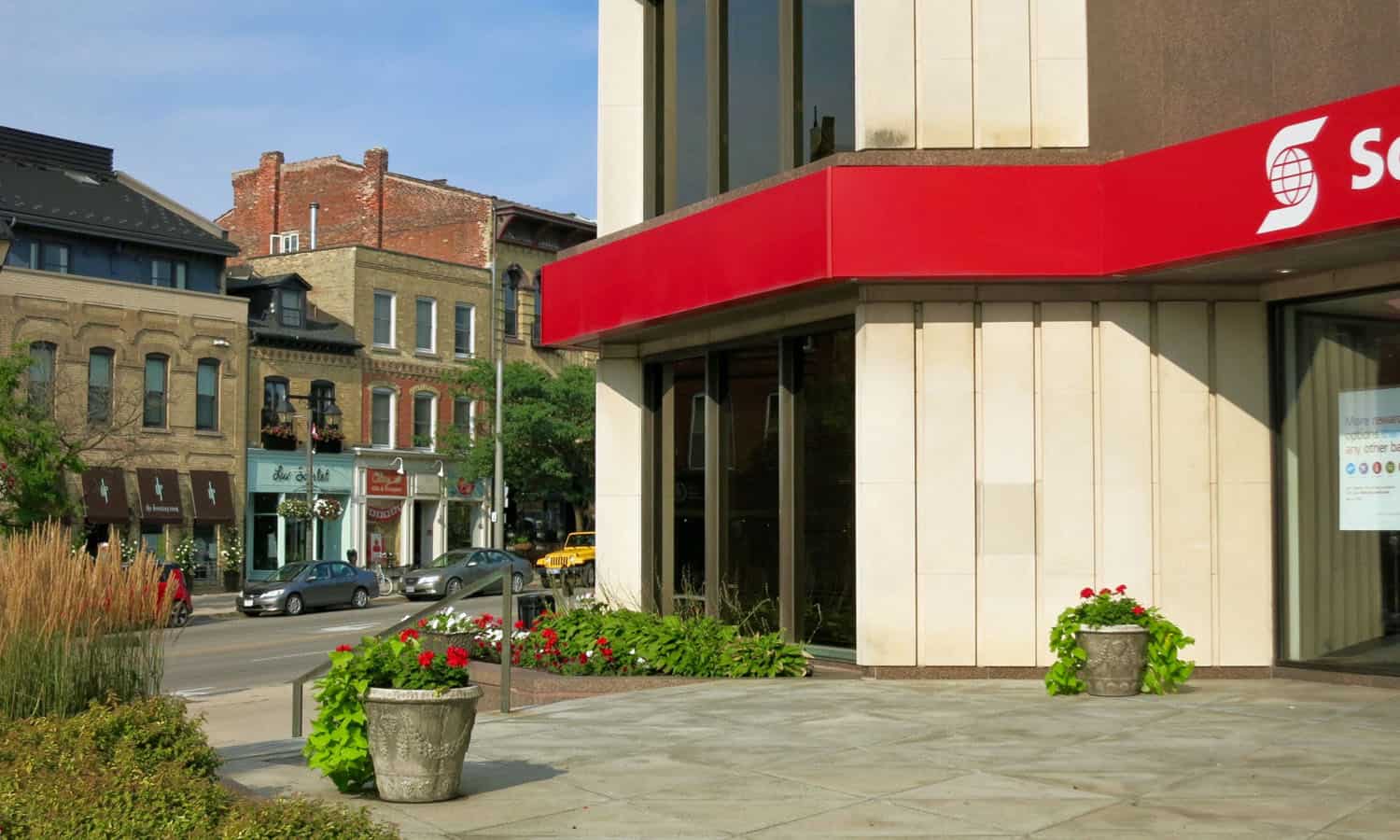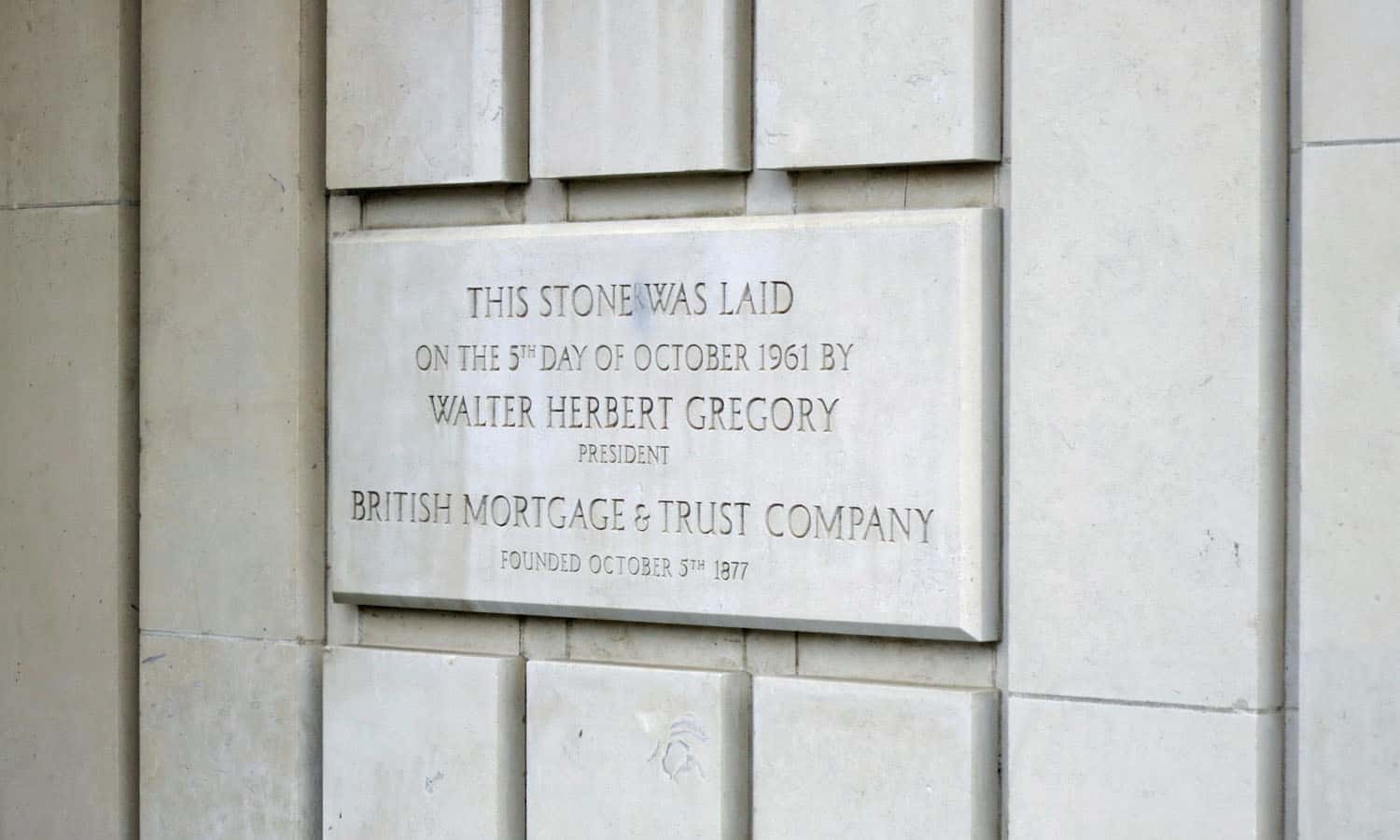British Mortgage & Trust Company
Located at a prominent intersection within the town centre and opposite the historic courthouse, the headquarters building for British Mortgage & Trust Company is both an assertive, modern landmark and a sensitive insertion within the existing urban context.
The building is associated with the financial sector in Ontario, and has borne witness to its evolution. British Mortgage Loan Company of Ontario was founded in London in 1877; and the following year, the company relocated its headquarters to Stratford. In 1926, its name was changed to British Mortgage & Trust Company. Rounthwaite and Fairfield’s design was the first, purpose-built headquarters for the company, and the building was opened in 1962. With the ensuing consolidation of the financial sector in Canada, the building has been associated with Victoria & Grey Trust, National Trust, and later Scotiabank.
The selected site posed significant urban design and architectural challenges. The prominent corner site is at the intersection of three streets: Ontario, Church and Huron. The neighbouring buildings are prominent institutions within Stratford: Perth County Courthouse (G. Durand, 1886), Carnegie Library (J. Russell, 1903), and Masonic Temple (J.S. Russell, c.1930’s).
Architects Rounthwaite and Fairfield employed a plan geometry of 120-degrees for the building, which is 3,340sq.m. in floor area. Along Ontario St., British Mortgage & Trust Co. terminates a row of party wall buildings, and steps back in both plan and section to respect these neighbouring structures. The stepped, angular forms and flat roofs of the four-storey ensemble are emblematic of the Modern Movement, as are the open plinth, stone veneer and generous, metal-framed glazing. The design communicates a modern image for British Mortgage & Trust Co., balancing qualities of solidity and security, with those of transparency and openness.
The continuous bands of Quebec granite at each floor level provide a horizontal counterpoint to the vertical panels of white limestone. This is a very rare example of Portland stone in Ontario, quarried off the coast of Dorset, England, and shipped by sea and rail. The bronze, wall-mounted clock lends a civic air to the financial institution. A bronze armorial crest has since been removed. The integrated flower boxes are part of the original design, intended to add a festive air.
The 120-degree geometry was seamlessly integrated within the interiors. A hexagon theme informed room shapes, floor patterns, and even light fixtures. The two-storey high Savings Department, the grandest interior space, is the modern equivalent of a 19th century banking hall. Floors were finished in terrazzo, and details were executed in Cremo Italian marble.
The architects and their client ensured that there were local contributions to the new headquarters. Stratford’s Imperial Furniture Manufacturing Co. provided chairs and desks. Local potter Elaine Joyce produced ashtrays and bowls. Canadian paintings were hung within the interiors.
British Mortgage & Trust Company is a significant work of Rounthwaite and Fairfield Architects. The building complements the firm’s other major project in the city, the Massey-medal winning Stratford Festival Theatre.
The building benefits from continuity of use, and accommodates banking activities to this day. The exterior of the building retains a high level of integrity.






